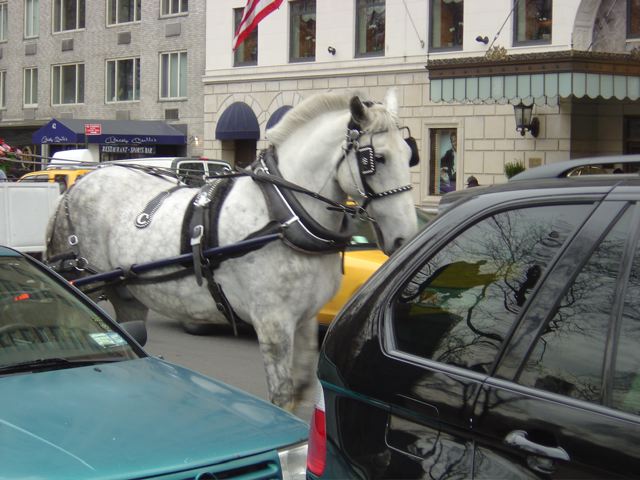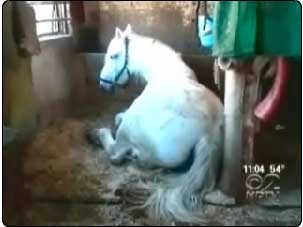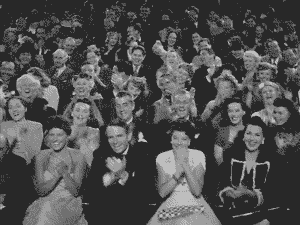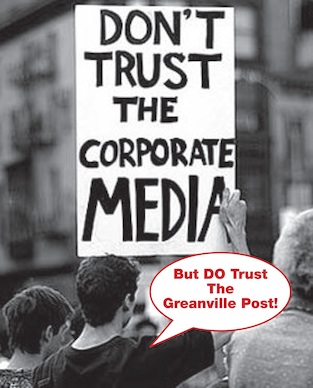THE TOP 15 REASONS WHY NYC SHOULD BAN HORSE-DRAWN CARRIAGES
By the Coalition to Ban Horse-Drawn Carriages
All great infamies are comprised of unchallenged aggregations of smaller ones.
(Originally redacted June 4, 2011)
Click on image to enlarge it
HUMANE CONDITIONS – The average working life of a carriage horse on NYC streets is under four years compared to a police horse whose working life is about 14 years. This information was derived from extensive research going back to the 1980s by the Carriage Horse Action Committee, which ceased operations in 1994. On the streets of NY, these horses are constantly nose-to-tailpipe and often show corresponding respiratory impairment. Because they are not given adequate farrier care, lameness is often a problem, especially walking on pavement. Horses must work in hot humid temperatures and in the brutal cold – nine hours a day, seven days a week and go back to stuffy stable where they have no opportunity for turnout. Many of the stables are firetraps with inadequate sprinkler systems and fire protective devices and only one means of egress. Most house the horses on upper floors, which makes it even more difficult to evacuate them if there were a fire. It is not unusual to see urine and feces stains on the horses. Because of their previous uses on the racetrack or on Amish farms, many of the horses come into this industry with preexisting injuries or arthritis and are forced to pull carriages containing heavy tourists – upwards of 7-800 pounds. When these horses are no longer fit to work the demanding streets of NYC, they are “retired” – many go to auction where their fate is unknown. “Killer Buyers” often buy these horses by the pound for the slaughterhouse. Horsemeat is a delicacy in some European countries.
IMMORAL INDUSTRY – Many people feel that the NYC carriage horse is from another century, is exploited for profit and forced to live and work a very grueling existence in modern day NYC – all for profit and for a relatively few number of tourists. At the end of their “career”, most are sold to auction and eventually end up in the slaughterhouse. [See: Horse Slaughter/Animal Cruelty] This form of “entertainment” is exploitative and is comparable to animal circuses and roadside zoos. In the United States, over the years other immoral institutions have ended regardless of the economic impact to the industries involved. These include the use of child labor and sweat shops.
ENVIRONMENT – Besides the humane issue that compel many people to object to the carriage horse trade, there is also the pervasive smell of horse feces and urine that permeates Central Park South. Even when the horses are not on the hack line at CPS, the unpleasant smell is always there. In addition, the Sanitation Department has to clean the feces from the street. People who live on Central Park South have complained about this smell for years. Those who object cannot open their windows in nice weather. In one community close to the stable on 45th St., public school children complained of health problems.
FALSE ISSUES
NYC and Company is the official tourism web site of NYC. Yet there is no mention of the carriage horse trade as being a big tourist attraction on its web site. Instead it mentions, sports events, shopping, restaurants, museums and galleries, historical attractions; Broadway; nightlife and entertainment; sightseeing tours. http://www.nycvisit.com/home/index.cfm
Let’s keep this award-winning site going!
| Yes, audiences applaud us. But do you?If yes, then buy us a beer. The wingnuts are falling over each other to make donations…to their causes. We, on the other hand, take our left media—the only media that speak for us— for granted. Don’t join that parade, and give today. Every dollar counts. |
|---|
| Use the DONATE button below or on the sidebar. And do the right thing. Even once a year. |
Use PayPal via the button below.
THANK YOU.




